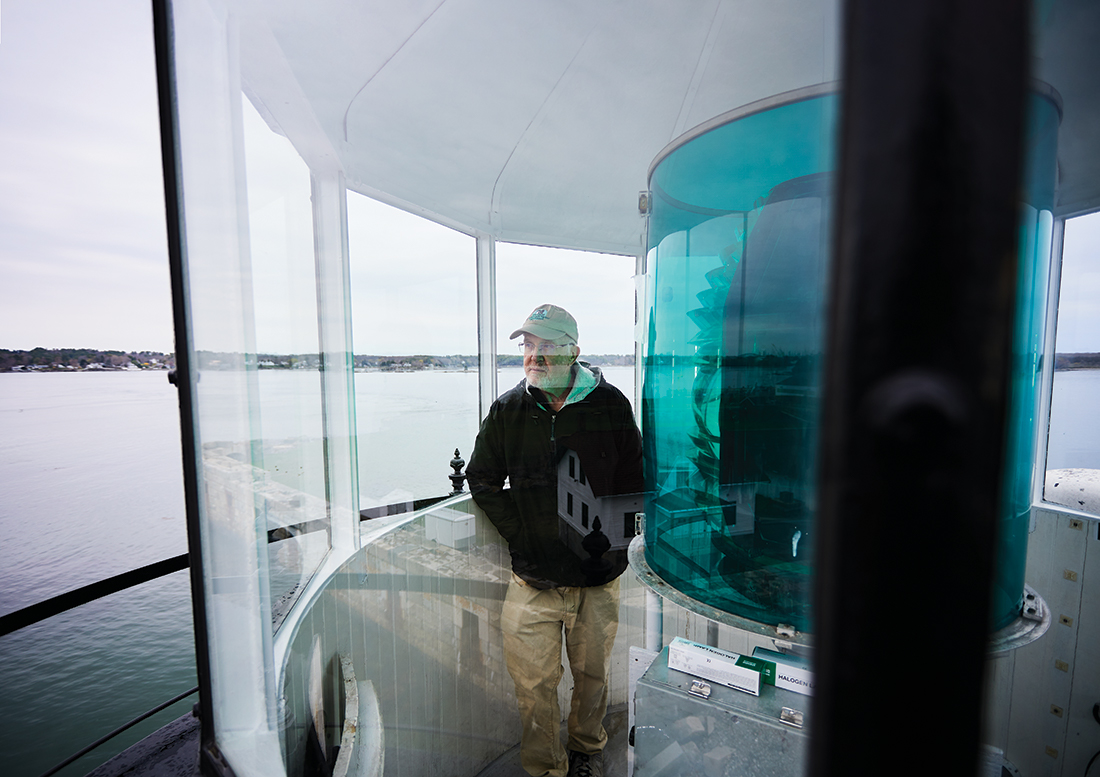What’s not to like—some would say love—about lighthouses? As human-made structures, their picturesque beauty is unmatched, they still serve a noble purpose, and they’re steeped in a daring, fascinating past. George Bernard Shaw was spot-on when he wrote: “I can think of no other edifice constructed by man as altruistic as lighthouses. They were built only to serve.”
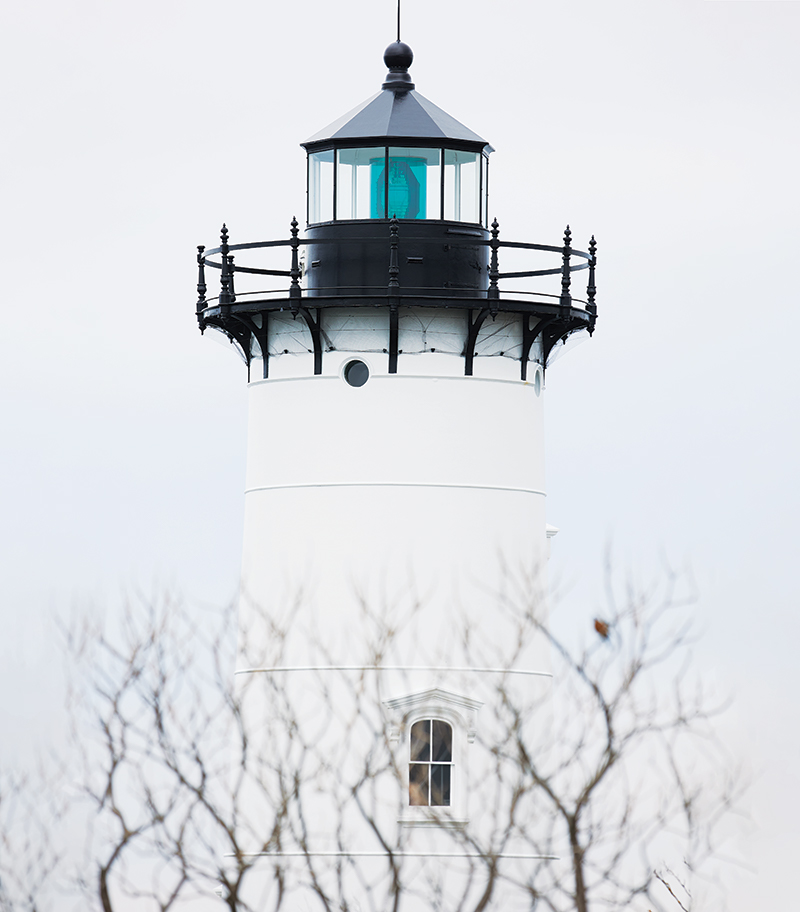
In 2014, New England filmmaker Rob Apse was working on a short documentary, The Stones of the Quarries, about the granite quarrying industry in Cape Ann. He wondered “where all that stone went,” he told me in a telephone interview. Intrigued by the meaning behind the stone as symbols of strength and security, he let the idea simmer until it bubbled up into a new project, lighthouses, that are as much signatures of New England as maples, cod, and white-steepled churches.
Eventually, he took a deep dive into the facts in between his duties at his business, Wandergroove, “a creative marketing studio curating the history and culture of brands through filmmaking and storytelling,” as his website explains.
Apse battled with the narrative arc for five years while he researched and shot film footage. Often he sailed in a boat to capture his subjects—human as well as structures—as dawn unfolded, erupting beautiful oranges, blues, and purples, while recording sounds of seagulls and other birds. “It’s almost like you’re going to the edge of the world to get out to it.”
Finally, he settled on his through line. “I looked at the historic past of the stories surrounding lighthouses and their keepers and paralleled those stories and events with the preservation efforts happening now.” He titled his documentary, The Last Lightkeepers.
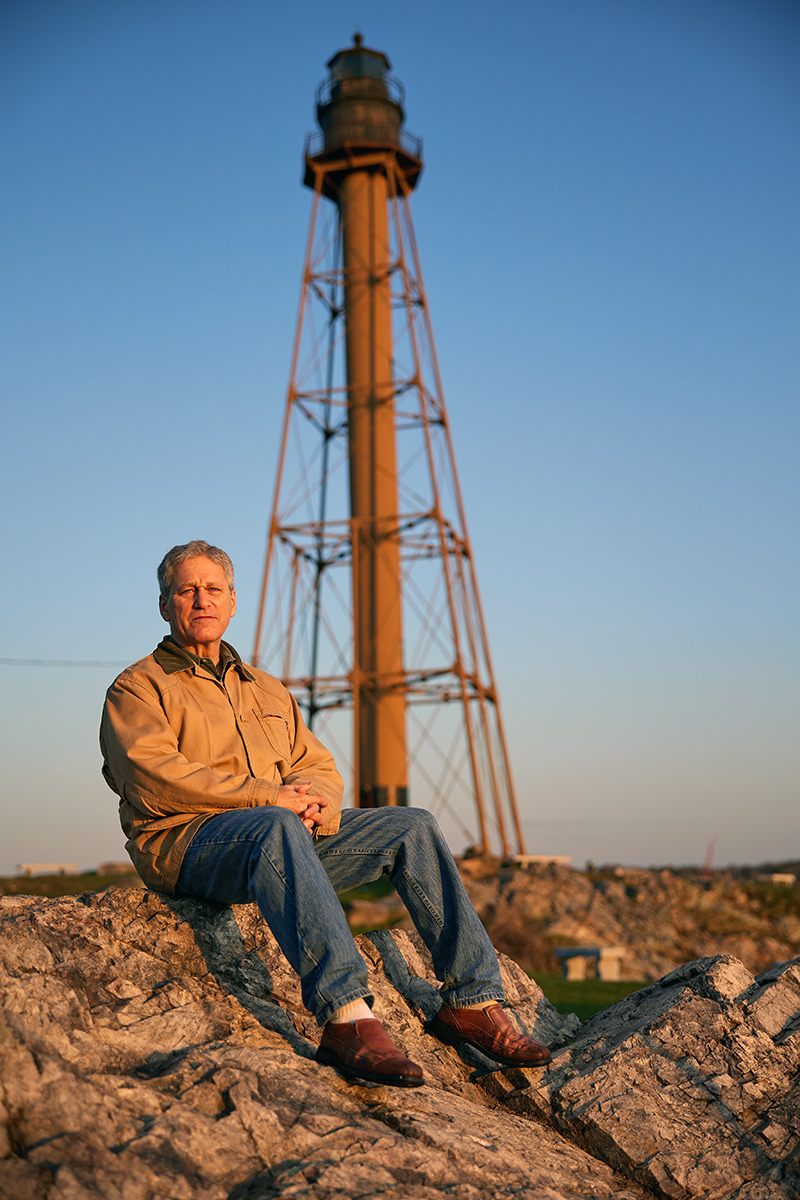
He interviewed knowledgeable people. A trove of information came from Marblehead author-historian Eric Jay Dolin, whose book, Brilliant Beacons: A History of American Lighthouses, provided a comprehensive guide for the film. Dolin speaks on camera giving context to the narrative line. “Rob chose the important topic of preservation,” he says, “and he used key individuals to highlight the nature of the task that confronts them.”
At one time it’s estimated there were about 1,500 lighthouses in the United States, but never more than about 850 in operation at once. Maine led New England with about 80. Seven are located at Cape Ann. But each holds its own singular history, though sometimes imbued with tragedy. “The ocean can be a scary beast,” Apse says. “Yearly, the structures face torment.”
Life near the sea can be unforgiving. “Lighthouse keepers have been romanticized,” Dolin says. “Many have done heroic things. But you don’t want to look back with rose-colored glasses because it was a tough profession.” Essentially, their isolated lives were the ultimate in social distancing. This, we understand all too well.
Apse also interviewed Jeremy D’Entremont, a renowned lighthouse author, lecturer, and preservationist, who has led restoration efforts for many New England lighthouses.
The film unfolds with a prologue and five chapters, then concludes with an epilogue. Chapter II, “The Flying Santa,” tells the story of the beloved tradition founded in 1929 by aviation pioneer Captain William Wincapaw, who loaded his plane with bags of Christmas gifts and dropped them from on high to industrious lighthouse keepers of Maine below. Later, Edward Rowe Snow of Massachusetts expanded the goodwill deliveries to other Coast Guard stations across New England. Snow’s daughter, Dolly Snow Bicknell, attests to her father’s 96 percent accuracy to land the packages on his target.
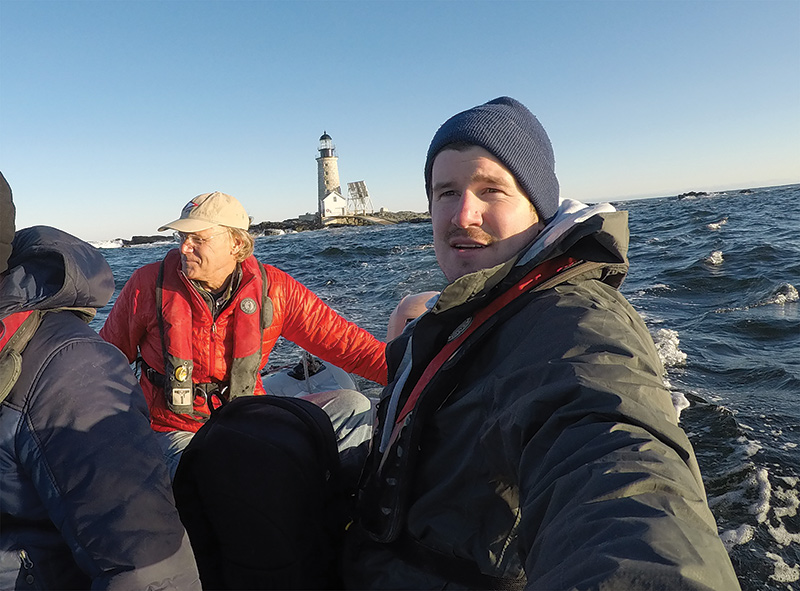
Paul St. Germain of Rockport joined the filmmaking effort as a consultant with 22 years of experience as president of the Thacher Island Association, a group that, along with the Thacher & Straitsmouth Islands Committee, works to preserve the two islands off Rockport. Here exist some of the most dangerous coastal waters in the world coupled with the menacing Londoner Reef.
John Hancock in 1771 petitioned the British government to build two lighthouses “for the safety of his own and other ships.” Then, only Boston Light and Portsmouth Harbor Lighthouse in New Hampshire shared beams to guide incoming ships to America, deceiving mariners during dire weather. Two distinctive towers, 45 feet high, were erected on Thacher Island and lighted the first time in December, and soon gained the nickname “Ann’s Eyes.” Almost a century later in 1861, two new 124-foot granite lighthouses were built. During the “Perfect Storm” in 1991, Thacher Island was split in half with the ferocious Atlantic raging in the middle for about 24 hours.
An oft-told seafaring tale St. Germain likes to tell rings of truth and romance. In 1919, the ship carrying Woodrow Wilson returning from the ratification of the Treaty of Versailles, was locked in fog and missed catastrophe at the last minute when the vigilant lightkeeper repeatedly blasted the fog signal. During research for the National Historic Landmarks’ nomination of the island, St. Germain found a photograph of Franklin D. Roosevelt next to the president. Roosevelt was secretary of the Navy.
But a sea change in advanced navigational tools and GPS units shifted the paradigm in the 1960s. “The need for lighthouses has diminished to almost zero,” St. Germain says.
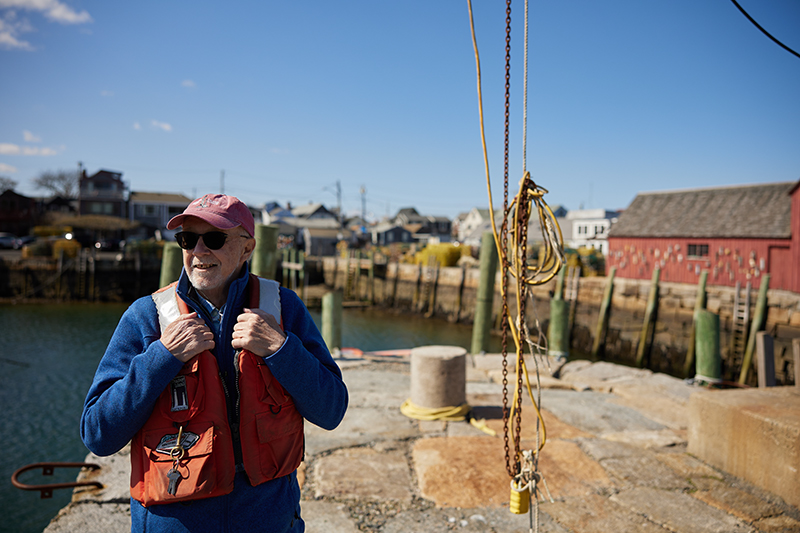
So now, tradition, restoration, and nostalgia must unite in battle to preserve this precious heritage of American history. Dolin says, “You cannot understand or appreciate the development of the colonies, and then the nation, without understanding and appreciating the history of lighthouses. They are that integrally connected.”
The National Historic Lighthouse Preservation Act in 2000 created a mechanism to dispose of these structures. The U. S. Coast Guard manages the transfers of ownership at no cost. First claims are offered, preferably to cities and nonprofits. When no proper caretakers come forward, they’re auctioned for private ownership.
Apse wanted especially to include a segment on Thacher Island because of the “Fresnel lens angle.” These powerful lenses, invented by French physicist Augustine-Jean Fresnel in the 19th century, revolutionized lighthouse projection by means of six orders of lenses, each helping to magnify the beam of light. Thacher Island’s first-order Fresnel lens was installed in 1861.
In 1980 the lens was removed as an artifact for display at the Coast Guard Museum at New London, Connecticut. Meanwhile, disposition of the lens in the North Tower resulted in a snafu. It was carelessly thrown out and crashed to the ground. Over the years scattered pieces have been discovered. In one instance, St. Germain found a crystal piece on eBay used for lighting a bathroom in Rockport, and he quickly purchased it for display in the visitor’s center.
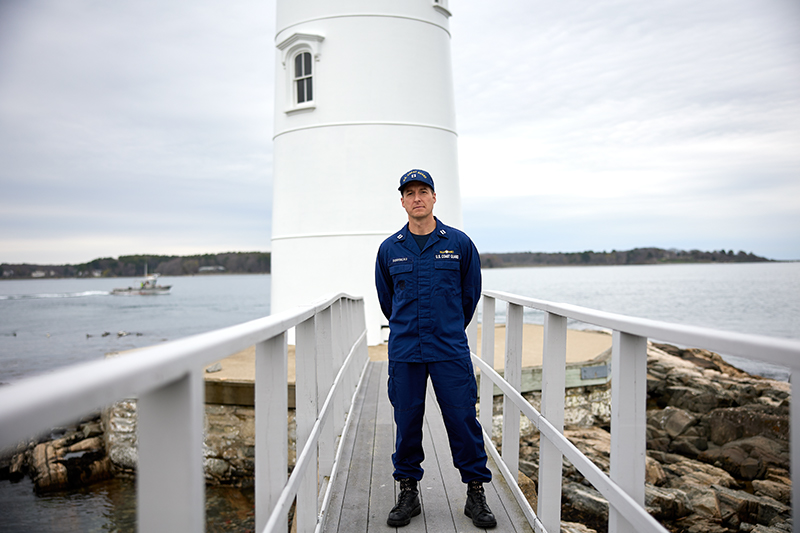
The Association took steps to return the intact light to Rockport. But Coast Guard restrictions insisted that it could be installed only in a humidity-and-temperature-controlled, dust-free environment. No such place large enough existed in Rockport.
Enter the Cape Ann Museum in Gloucester. With its new expansion underway, the museum board was thrilled to offer gallery space for the restored Fresnel lens for all to experience up close. Apse says, “It’s a very unique story.”
Eric Dolin believes that “it’s a wonderfully filmed documentary. I’d like viewers to enjoy the beauty of the film and the images that they see fly across the screen. It would be great if the documentary encourages some of the viewers to take the next step, which may be reading about lighthouses, visiting a local lighthouse, or joining an organization whose main purpose is to preserve and protect lighthouses, so that future generations can enjoy them as well.”
To Apse, “Lighthouses have shown a stability in people’s minds. The film reveals a time when the interactions of humans to other humans helped mariners to survive. It didn’t matter who you were or where you came from. Lighthouses are important symbols we need today in the turmoil of the political climate.”
To watch the documentary film, visit thelastlightkeepers.com.

